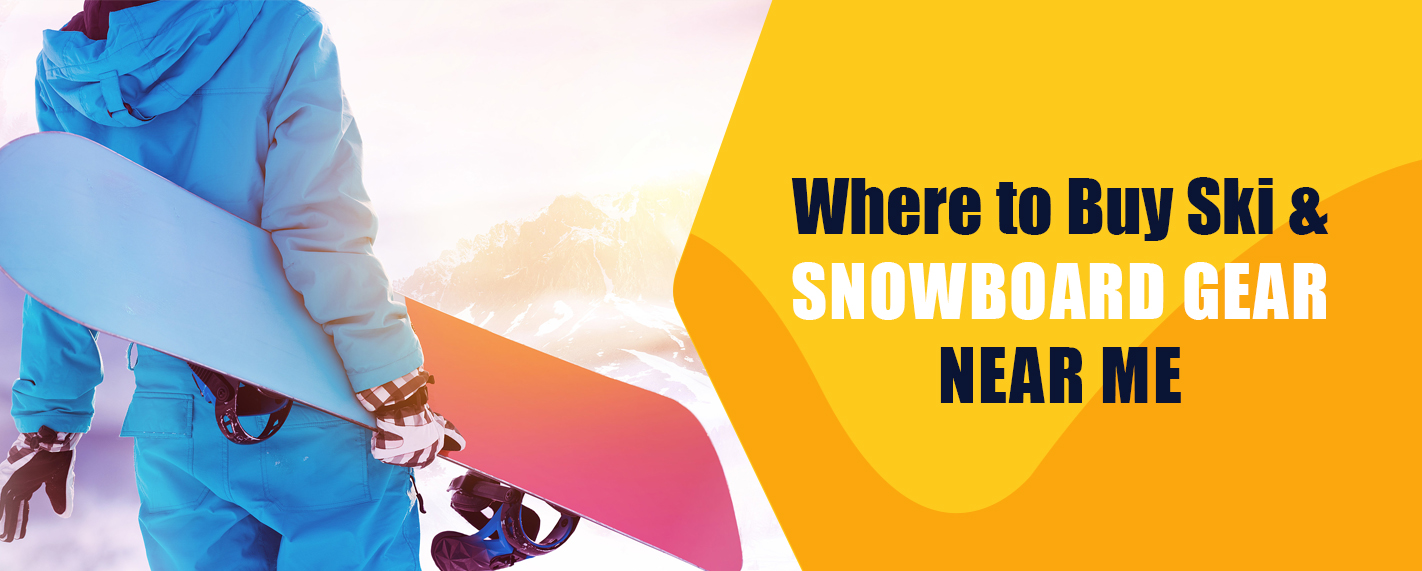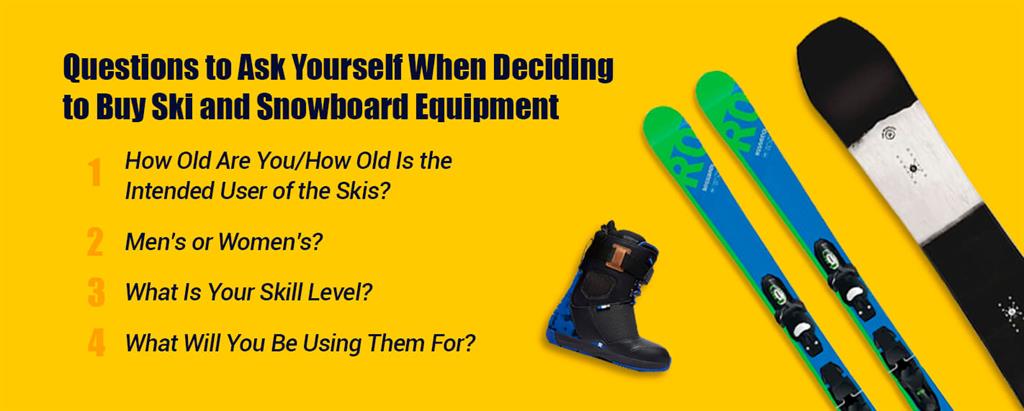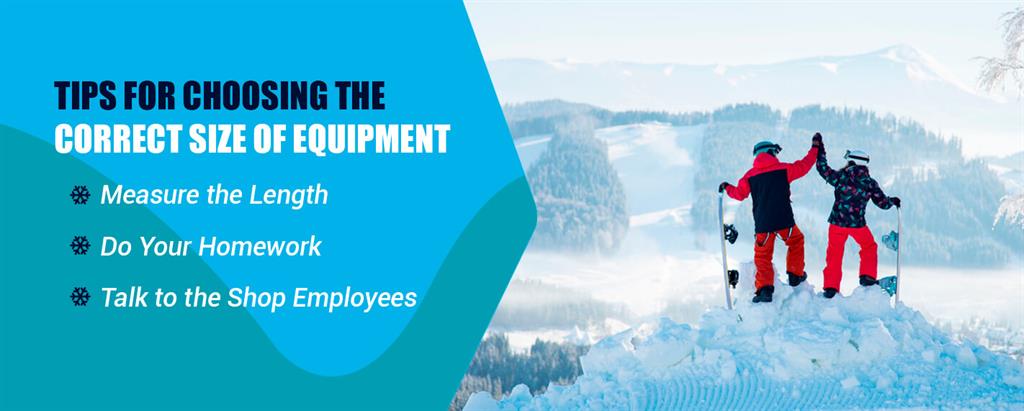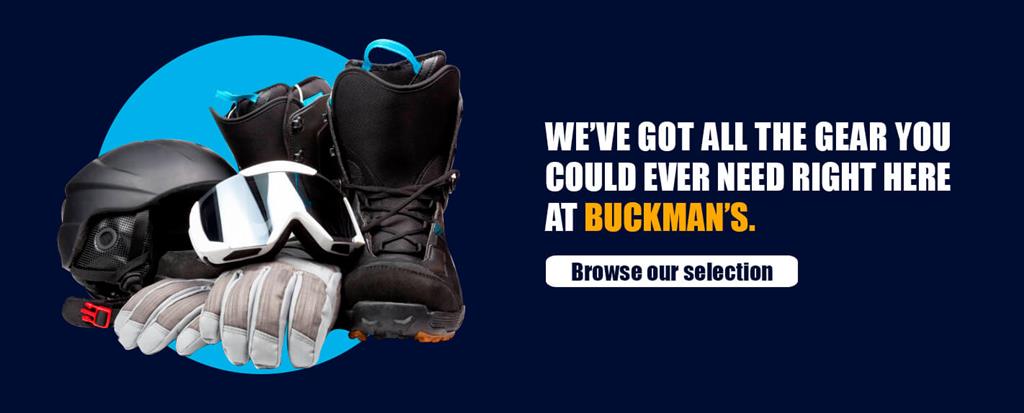 where to buy skis and snowboards near me
where to buy skis and snowboards near me
Where to Buy Ski and Snowboard Gear
Posted
by
Matt Gahman
on Tuesday, June 4, 2019
There’s nothing that quite compares to the fun of skiing and snowboarding, but the sport comes with the need for the proper equipment. If you don't have your own gear, you may have found yourself Googling "snow gear near me." After all, if you don’t have the correct helmet, bindings, boots, and goggles, you’re putting yourself at risk for injury. Even basic cold-weather gear such as coats, warm socks and gloves are essential when it comes to staying warm on the slopes.
With all of the different types of snow gear out there, it can be hard to know where to start. You may have a sense of where to shop and what to buy if you have some experience with these sports, but if you're a beginner, you may feel overwhelmed as you employ trial and error to find the products that work for you.
Finding the right skis and snowboards near you doesn't have to be frustrating or confusing. We want to simplify things for you by walking you through the process of stocking up on gear for your next skiing or snowboarding trip. We’ll go over where to buy skis, how to buy skis, and tips to make sure you’re choosing the right ski and snowboard gear for yourself. Follow these suggestions from ski and snowboard experts, and you’ll be a pro at finding snow gear near you.
Ski Equipment and Snowboard Equipment: To Buy or to Rent?
When you start to acquire the necessary gear and accessories you’ll need to begin snowboarding or skiing, one of the first things you’ll notice is the choice between renting and buying. Both options are readily available and it may be difficult to know which is best for you. If this is where you’re stuck, here are a few considerations to keep in mind.

- Cost: When you buy skis and other equipment, you’ll almost certainly pay more upfront than the cost of renting equipment. While this might make you immediately assume renting is always the better option, it isn’t quite that simple. If you rent, you’ll need to pay this rental fee every single time you want to go skiing. Over time, this is certain to add up. Compare this with skis and equipment that you only pay for once. Depending on how often you ski, buying your equipment may end up being the more cost-effective option.
- Familiarity: When you own a pair of skis or your own snowboard, they become a part of your experience. You know how they run, and you know how to control them. The same applies to poles, bindings, and boots. Owning something allows you to recognize when it’s performing well and when something seems off and needs attention. You can also customize your equipment, making it more individually suited to you. Gear that you only rent, however, will always be more generic, only allowing you a limited familiarity with its unique quirks.
- Travel: Bringing your skis or snowboard with you on a plane can be a bit of a hassle. While we think it’s always preferable to have your own equipment, if there is a situation involving connecting flights, running through airports and wrangling three suitcases at once, it may be most convenient to consider renting once you arrive at the resort.
- Time: Renting takes extra time. While you’re waiting in the rental shop trying to find equipment in your size and testing out different pieces of gear before finally finding the right ones, the person who brought their own equipment will already be out on the slopes. Simply put, it’s faster, easier and simpler to own your own equipment.
Overall, while it’s true that there may be the occasional situation where there are advantages to renting — such as when complicated travel plans are involved — we think it’s almost always preferable to own your own equipment.
Where to Buy Skis, Snowboards, and Snow Gear?
When it comes to purchasing gear, you have two primary options. Either shop online or visit a winter sports store in-person and shop there. You may choose a combination of these options and buy your equipment from a variety of different sources or you may find that either online or in-person shopping is a better fit for you and stick exclusively with that method.
The primary advantages of shopping online for your equipment are:
- It’s extremely convenient. You can buy everything you need for your ski trip without ever once leaving the couch.
- There’s often a greater selection when you buy online, as you aren’t limited to what’s in stock in that particular location.
The primary advantages of shopping in-person are:
- You can try things in-person. Test if those boots fit or if those poles are too tall instead of guessing and estimating.
- Items may look different in person than they do online. By seeing them right in front of you, you’ll be sure you know what you’re getting.
Regardless of how you choose to buy skis, either option is beneficial.
Not sure where to find a ski and snowboard shop near you? A quick Google search will be very helpful in this regard. Additionally, if you have any friends who enjoy winter sports, you can always ask them where they shop.
Types of Ski and Snowboard Equipment to Purchase
With so many essential pieces of gear to purchase, it can be easy to let something slip through the cracks. There’s nothing worse than getting to the ski resort and realizing you’re missing a crucial piece of gear. Avoid this pitfall by running through this checklist of winter sports equipment that you’ll want to collect before you head out on your trip.
- Skis:
If you’re planning a ski trip, it’s unlikely you’ll forget to buy skis, but you never know. Sometimes, it’s the most obvious things that are easiest to forget. It’s important to add it to the list just in case.
- Snowboard: If you’re taking a trip that’s dedicated to snowboarding, it naturally follows that you’ll need a snowboard. Unless you plan to rent, make sure you have one of these lined up and ready to go. You can find the perfect snowboard for you by doing a simple Google search of "where to buy snowboard gear near me."
- Ski and Snowboard Bindings: Ski bindings are the crucial component of a ski that binds the ski to the boot, thus keeping it attached to the user’s foot. Without bindings, skiing would be impossible. Snowboard bindings are equally important for the snowboarder and perform the same function of strapping the board and the boot together.
- Boots: Whether you’re skiing or snowboarding, finding the right boots is absolutely crucial. Make sure they fit well, are comfortable and pair well with your skis or snowboard. Don’t forget that snowboard boots and ski boots are designed differently, so make sure to shop for the correct sport as well.
- Poles: Like bindings, it’s hard to ski without ski poles. You hold these in your hands while skiing and use to propel yourself in the direction you want to go. Ski poles come in all different sizes, so make sure to grab the correct size for your height. If you need help finding poles, you can type "where to buy ski gear near me" into Google!
- Helmets and Goggles: Whether you’re skiing or snowboarding, helmets are a critical piece of equipment that you cannot be without since they provide invaluable protection in case of an accident. Make sure your helmet fits snugly but isn’t so tight that it becomes uncomfortable. You’ll also want to add a pair of goggles to the mix that will keep the flying snow out of your eyes as you careen down the hill. Ideally, you’ll purchase these items together to ensure they fit with one another.
- Gloves or Mittens: It’s important to keep your extremities warm when you’re out in the cold. Gloves or mittens can help you stay comfortable on the slopes all day long. Most people agree that mittens are better at keeping you warm, but gloves provide more freedom of movement and may be better for gripping ski poles. Decide which you prefer and make sure to grab a pair of them for your trip.
- Coat: When skiing or snowboarding, you’ll need a waterproof outer-layer that both keeps you dry and traps your body heat, keeping you nice and toasty even on the coldest of days. A coat will perform this task well. When shopping, make sure the coat is close-fitting enough to effectively keep you warm, but not so tight that it restricts your movement.
- Snowpants: Snowpants perform the same function as a coat, but they’re designed to protect your legs instead of your torso. By choosing the right pair, you can help keep your legs dry and warm while out on the slopes. The longer you stay warm, the longer you can have fun out in the cold.
- Baselayers: You’ll wear baselayers on both your legs and the torso. These thin but waterproof pieces of clothing are designed to wick moisture away from your body and provide an insulating layer of fabric that protects you against the bitter cold. These items should be very close-fitting, but stretchy enough that you still retain your full range of motion.
- Socks: Just as you’ll need mittens or gloves to keep your hands warm, so too will you need socks to protect your feet against the cold. Make sure to try these on with your boots or you may risk buying socks that are too bulky to fit inside the confines of your boots.
Questions to Ask Yourself When Deciding to Buy Ski and Snowboard Equipment
The most important piece of equipment you’ll purchase is the skis and snowboards themselves. Therefore, let’s take a look at some of the questions you’ll want to ask yourself as you sort through the many available options out there to discover the one that’s best for you.

1. How Old Are You/How Old Is the Intended User of the Skis?
Adults skis and children’s skis are very different. Adult skis will be much too large for children, and vice versa. Not only this, but adult skis are stiff and designed to accommodate an adult’s weight. Children’s skis, on the other hand, are designed to be softer, more forgiving and require less maintenance. An adult would be unable to ski on children’s skis, and children would have a very difficult time using adults’ skis. Because of this, it’s important to purchase skis for the correct age range. To find out if your local ski shop carries a variety of skis for a variety of ages, be sure to search "ski shop near me" in Google, and give them a call to ensure they have what you need.
2. Men's or Women's?
At the children’s level, both boys and girls will wear the exact same skis, with no difference in construction between them. In adult sizes, however, this is not the case. Men’s and women’s skis are slightly different, and it’s important to buy the type of skis that are right for you. The differences are designed to suit the average height, weight, anatomical shape and stance of each gender and while there may be exceptions, you’ll generally have the best success when you use the type of skis that are right for your gender.
3. What Is Your Skill Level?
Different skis are designed to accommodate different ability levels. Certain skis are softer and more flexible, created to be easy for beginners to use. Other skis are going to be stronger and stiffer, designed for advanced users only. Decide where your skill level falls and choose your equipment accordingly.
4. What Will You Be Using Them For?
There are many different types of skis and snowboards. For example, cross-country skis are different from racing skis. When it comes to beginner level skis, you may have a bit more freedom when it comes to choosing a generic option. For the best results, however, you’ll want to ask yourself how you intend to use your equipment, and then go from there to purchase the most appropriate designs.
Tips for Choosing the Correct Size of Equipment
Never bought winter sports equipment before? Looking for a few tips to ease yourself into the process? Here’s what we recommend.

- Measure the Length: Some people prefer skis that are a bit longer and others prefer a shorter style. In general, however, a good rule of thumb to remember is that if you stand the ski on end next to you, it should reach somewhere between your chin and the top of your head. A snowboard, on the other hand, should just reach your chin, although there is also room for variation here.
- Do Your Homework: Don’t just grab whatever’s on sale because it happens to be cost-effective. Instead, take your time to do your research about the type of equipment that you want, that’s suited to the kind of skiing or snowboarding you’re doing and will be appropriate for someone of your size. Once you feel you know this, you can move forward in the purchasing process with confidence.
- Talk to the Shop Employees: The individuals who work at the ski and snowboard shop are an excellent resource. Explain what you’re looking for, and they’ll make sure you find it in the right size and style for you. There’s nothing wrong with not choosing to accept their help if you already are confident in what you want, but for someone who is a little unsure, their advice can be invaluable.
Why Choose Buckman's Ski and Snowboard Shops for Your Snow Gear?

Not sure where to buy snowboard gear near you? Look no further than Buckman’s Ski and Snowboard Shops. Whether you’re looking for skis, snowboarding boots, helmets or baselayers, we’ve got all the gear you could ever need right here at Buckman’s. To make your life even easier, we offer in-store pick up to our local customers!
We pride ourselves on carrying only items from the very highest quality manufacturers so that you can be sure every item you buy from us is a top industry competitor. When you shop on Buckmans.com, you'll get free shipping on most orders over $50. Not to mention, we offer a price match guarantee!
Browse our selection today and get started finding just the pieces you need to make your upcoming ski trip the very best one yet.
Categories:
Ski equipment
|
Snowboard Equipment
Tagged: ski, snowboard, ski and snowboard equipment